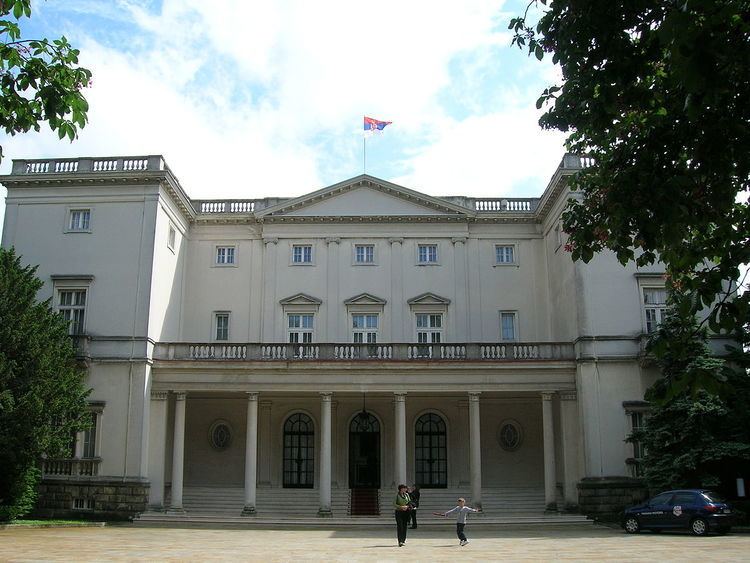Completed 1937 Architectural style Palladian architecture Owner Government of Serbia Architect Aleksandar Đorđević | Country Serbia Opened 1937 Phone +381 11 3064000 Construction started 1934 | |
 | ||
Address Pivljanina Baja, Beograd, Serbia Similar Royal Palace, Stari dvor, House of Flowers, Princess Ljubica's Residence, Novi dvor | ||
Dvorski kompleks beli dvor i kraljevski dvor iz vazduha
The White Palace (Serbian: Бели двор / Beli dvor) is a former royal residence of the Karađorđević dynasty. The palace is located in the Royal Compound, in the Dedinje neighborhood of Belgrade.
Contents
- Dvorski kompleks beli dvor i kraljevski dvor iz vazduha
- History
- Art collection
- Lootings and theft
- Selected works of art
- References
The White Palace located in the same complex as the Royal Palace, the official residence of the Karađorđević royal family. The palace was designed by architect Aleksandar Đorđević, in a neo-Palladian manner inspired by the 18th century English houses such as Ditchley Park. Its interior was decorated with English Georgian and 19th century Russian antiques by the French design firm Maison Jansen, which later decorated the White House during the administration of John F. Kennedy.
History
The palace was commissioned and built with the personal funds of King Alexander I for his three sons. Alexander was assassinated during a state visit to Marseille, France, the same year construction on the palace began. Supervision of construction was overtaken by the Prince Regent Paul until its completion in 1937. Queen Maria and her three sons, including the 11-year-old King Peter II, continued to reside in the Royal Palace during this time. Prince Paul was the only member of the royal family to reside in the palace before the outbreak of the Second World War and invasion of Yugoslavia."
Following the end of the war, the new communist government seized the assets and property of the royal family. Beli dvor was periodically used by presidents Josip Broz Tito and later by Slobodan Milošević for official state functions and foreign visits. Milošević received U.S. envoy Richard Holbrook at the palace before the NATO bombing of Yugoslavia began; Milošević later officially resigned his presidency in front of the palace fireplace.
The White Palace is open for public visitations on weekends during the tourist season from April to November.
The Royal Compound has also participated in Tourism Fairs in Belgrade and Novi Sad and during the Days of the European Cultural Heritage.
Art collection
The qualified tour guides at the Palace will tell any visitor that Beli dvor's notable works of art include paintings by: Piero di Cosimo, Biagio d'Antonio, Nicolas Poussin (3 works), Giovanni Cariani, Sébastien Bourdon, Albrecht Altdorfer, Titian, Rembrandt (2 attributions), Palma Vecchio (2 paintings), Carlo Caliari, Peter Paul Rubens, Simon Vouet, two paintings by Brueghel, Antonio Canaletto, Eugène Delacroix, Jean-Baptiste Carpeaux, Giuseppe Crespi, Nicolae Grigorescu, Franz Xaver Winterhalter, Eugène Fromentin, Gaspard Dughet, Richard Parkes Bonington, Đura Jakšić, Ivan Meštrović, Vlaho Bukovac and others. This collection was created by Prince Paul of Yugoslavia. Also the green and white Sèvres porcelain service was purchased by him in 1932 in Paris from the gallery Charpentier. The service once belonged to the Comte d'Artois.
Lootings and theft
Many works of art were looted by communist Partisans in 1944, following the liberation of Belgrade from German occupation. One of looted pieces includes Rembrandt school's painting 'Klint Tabie Maximus'.
